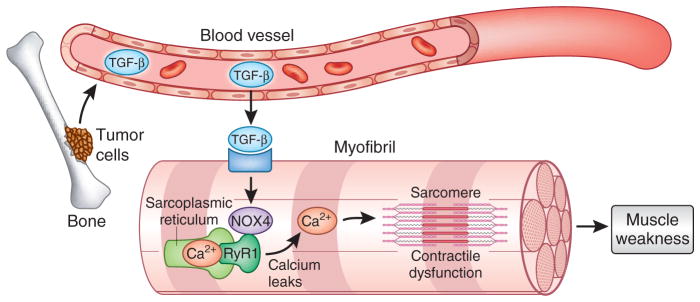Figure 1.
Bone metastasis leads to skeletal muscle weakness. Metastatic cancer cells induce the breakdown of bone and the release of TGF-β into the circulation. This increase in TGF-β signals myofibers in skeletal muscle to promote NOX4 expression that, in turn, causes post-translational modifications of the ryanodine receptor channel (RyR1) and calcium leaks from the sarcoplasmic reticulum. Altered calcium homeostasis alters the regulation of sarcomere proteins, leading to contractile dysfunction and muscle weakness.

